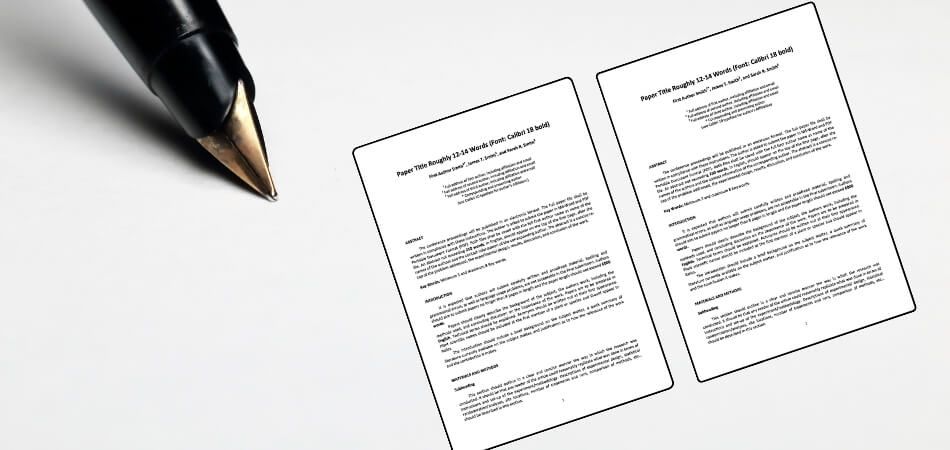Conference papers, often seen as valuable platforms for sharing preliminary research and ideas, serve an important role in the academic and professional world. However, they are not without their drawbacks. In this blog, we delve into the question, “What are the disadvantages of a Conference paper?”
Despite their potential for fostering immediate discussions and networking, conference papers typically lack the rigorous peer review process that journal articles undergo. This absence can affect the credibility and depth of the research presented.
Additionally, due to the inherent nature of conferences, these papers are constrained by limited presentation time and space, reducing the opportunity for detailed exposition and thorough discussion.
Furthermore, compared to journal articles, they often have less visibility within the broader academic community. Join us as we explore these aspects in detail, offering a comprehensive understanding of the challenges faced by conference papers.
Conference Paper- What is it exactly?
A conference paper is a form of scholarly writing presented at academic or professional gatherings like arts and education conferences. These papers are generally focused on sharing new research findings or theoretical developments. They serve as a platform for discussion and feedback from peers in the field.

A conference paper is a concise document outlining a researcher’s work in a specific area. It’s designed for oral presentation within a limited timeframe, usually followed by a question-and-answer session. This format allows for immediate interaction between the presenter and the audience, fostering a dynamic exchange of ideas.
What Does a Conference Paper Contain?
Conference papers are scholarly documents prepared for presentation at a conference, often embodying cutting-edge research and insights. It serves as a platform for academics and professionals to share and discuss their work. These papers are key to fostering dialogue and collaboration in various fields. Here’s what a conference paper contains:
- Introduction: The paper starts with an overview of the topic, setting the stage for research. It outlines the paper’s purpose and main questions.
- Literature Review: This section contextualizes the research within existing studies, highlighting its relevance and uniqueness. It provides a background against which the ongoing research is positioned.
- Methodology: Here, the approach, tools, and processes used in the research are detailed. It gives an insight into how the data was collected and analyzed.
- Results: This part presents the research findings. An emphasis is placed on the outcomes of the data and their implications for the field.
- Discussion: The section interprets the results, discussing their significance and potential impact. It also addresses research limitations and future directions.
- Conclusion: Summarize the key findings and their relevance to the field. It often suggests areas for further research and practical applications.
The purpose of a conference paper is to encapsulate the essence of a research project in a comprehensive yet concise manner. A snapshot of ongoing scholarly discussions is provided, inviting further exploration and discussion.
Popular Types of Conference Papers
Conference papers are essential for disseminating research and ideas in academic and professional circles. They come in various formats, each tailored to different presentation styles and objectives. Understanding these types allows researchers to choose the most effective way to convey their findings.
Research Papers
These papers present original research, offering new insights into a specific field. They include comprehensive data analysis and are typically subject to a peer-review process. Research papers are valued for contributing to academic knowledge and often lead to more extensive publications.
Case Studies
Focused on specific instances or examples, case studies provide in-depth analysis of particular subjects. They help illustrate theoretical concepts or examine unique phenomena in detail. Case studies are often employed in business, psychology, and social sciences.
Position Papers
These papers present an opinion or stance on a particular issue backed by research and analysis. They are common in policy-making and academic debates, providing a platform for advocating new viewpoints. Position papers are crucial for shaping discussions and influencing decision-making processes.
Review Papers
Review papers synthesize existing literature on a particular topic, offering a comprehensive overview. They highlight trends, developments, and gaps in the research. Review papers are invaluable for researchers new to a field or those seeking an update on current knowledge.
The variety of conference paper types reflects the diverse nature of academic and professional research. Each type serves a unique purpose, contributing to the broader discourse in their respective fields. Selecting the right type is crucial for effectively communicating research findings and perspectives.
What are the Advantages of a Conference Paper?
Conference papers play a pivotal role in the academic and professional landscape, offering a unique platform for sharing and developing ideas. They provide a dynamic forum for researchers to disseminate their findings and engage with peers. These papers are more than just documents; they are catalysts for innovation and collaboration.
Immediate Feedback and Peer Interaction
Conference papers facilitate direct feedback from knowledgeable peers. This interaction provides valuable insights that can refine and improve the research. Presenting in front of an audience allows for real-time questions and discussions, enhancing the understanding of the topic.
Networking Opportunities
Conferences are melting pots of professionals and academics from various fields. Presenting a paper opens doors to collaborations, future research partnerships, and career opportunities. These networks are invaluable for both personal and professional growth.
Quick Publication and Dissemination
Conference papers are often published faster than journal articles. This speedy process allows for the timely sharing of research findings. They serve as a means to quickly disseminate new ideas and advancements to a relevant audience.
Professional Development
Preparing and presenting a conference paper is a significant professional development exercise. It hones research, writing, and presentation skills. This experience is crucial for academic and career progression, especially for early-career researchers.
The advantages of conference papers are manifold, spanning from fostering immediate academic engagement to offering opportunities for professional growth. They are essential instruments in the advancement of knowledge and the development of research communities.
What are the Disadvantages of a Conference Paper?
Conference papers, while valuable for academic and professional discourse, also come with certain drawbacks. These limitations can impact the reach and impact of the research presented. Understanding these disadvantages is crucial for researchers to navigate the academic landscape effectively.
Limited Peer Review
Unlike journal articles, conference papers often undergo a less rigorous peer review process. This can affect the credibility and thoroughness of the research presented. Consequently, they may not provide the same level of validation and scrutiny as more extensively reviewed publications.
Constrained Detail and Depth
Due to presentation time limits at conferences, papers must be concise. This brevity can lead to oversimplification or omission of critical details and analyses. As a result, the depth of discussion and the complexity of the research might be compromised.
Reduced Visibility and Impact
Conference papers typically have a smaller audience compared to published journal articles. Their impact is often confined to conference attendees, limiting broader academic and public engagement. This reduced visibility can affect the paper’s contribution to the field and citation potential.
Time and Resource Intensive
Preparing for and attending conferences can be resource-intensive. This includes both the time commitment for preparation and presentation and financial resources for travel and conference registration fees. Such demands can be challenging, especially for early-career researchers and those with limited funding.
In summary, while conference papers are essential for immediate academic exchange, they face challenges like limited peer review, constraints in detail, reduced visibility, and significant resource requirements. Acknowledging these disadvantages helps researchers make informed decisions about their dissemination strategies.
Tips to Overcome to Disadvantages of Conference Papers
Maximizing the academic and professional impact of conference papers requires understanding their disadvantages. By adopting certain strategies, researchers can effectively address the inherent limitations of these presentations. These tips are designed to enhance the value and reach of conference papers. Here they are:
- Enhance Peer Review: Seek informal peer review from colleagues before submission. This additional scrutiny can improve the quality and credibility of your work.
- Expand Detail Post-Conference: Consider publishing a detailed version of your paper in a journal post-conference. This allows for deeper exploration of your research.
- Leverage Digital Platforms: Share your conference paper on academic social networks or personal websites. This increases visibility and accessibility beyond conference attendees.
- Create Multimedia Supplements: Accompany your paper with supplementary materials like videos or slideshows. These resources can provide additional context and depth.
- Budget Planning: Apply for grants or institutional support to cover conference expenses. Efficient budgeting can mitigate financial constraints and resource limitations.
- Record and Share Presentations: Record your conference presentation and share it online. This extends the life of your presentation and broadens its audience.
While conference papers have inherent disadvantages, strategic approaches can significantly mitigate these challenges. By enhancing review processes, expanding detail, leveraging digital platforms, and wisely managing resources, researchers can maximize the impact and reach of their conference papers.
Final Words
In exploring the nuances of conference papers, we’ve uncovered their strengths and weaknesses. While they offer a platform for immediate academic exchange and professional growth, they have face challenges. The question, “What are the disadvantages of a Conference paper?” is crucial in this context.
These papers often need more peer review, constraints in detailed discussion, reduced visibility, and resource intensity. However, these limitations can be significantly mitigated by enhancing peer review, expanding details post-conference, leveraging digital platforms, creating multimedia supplements, and careful budget planning.
This comprehensive understanding allows researchers to strategically navigate the academic landscape, ensuring their work achieves the desired impact and recognition in their respective fields.







